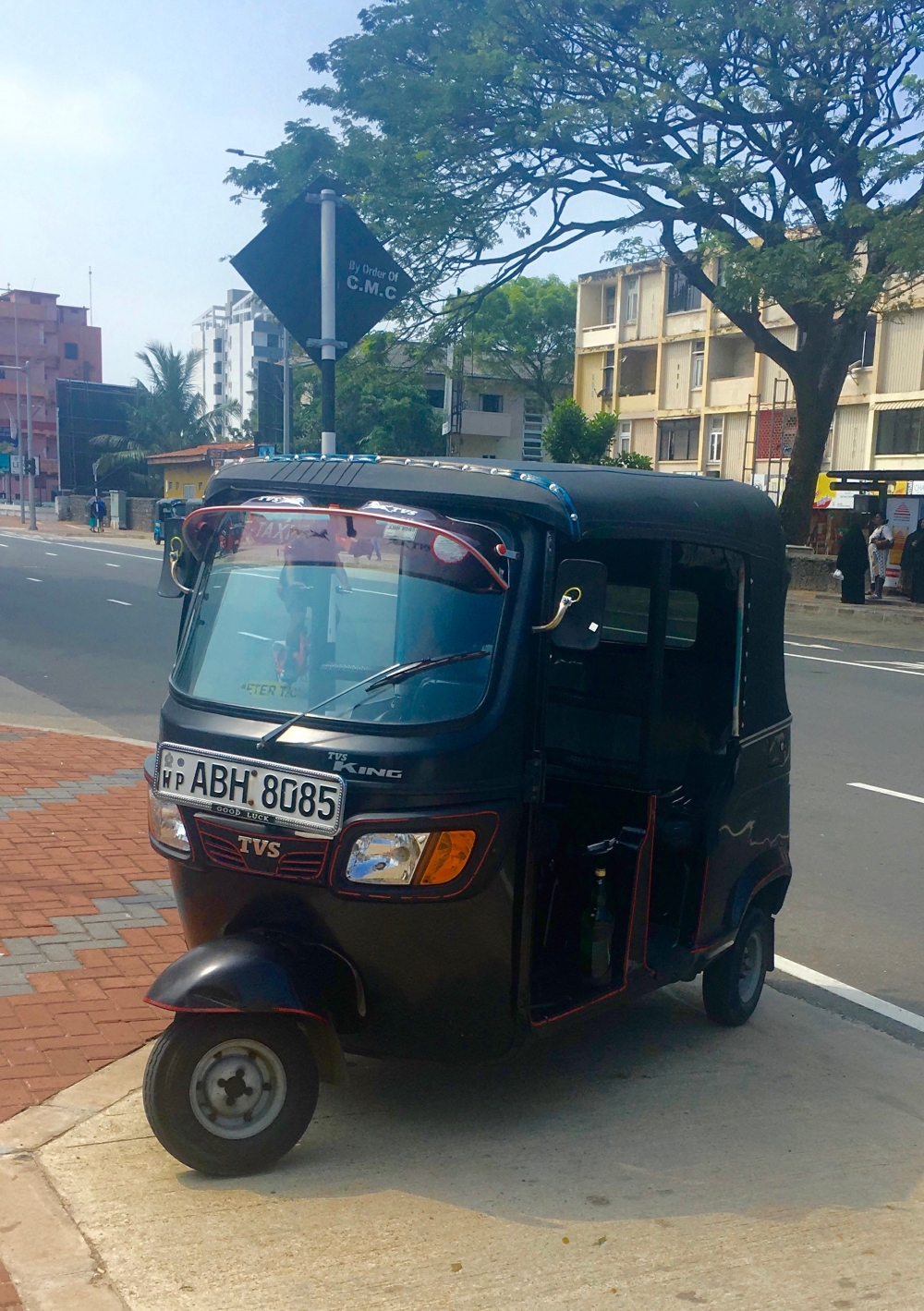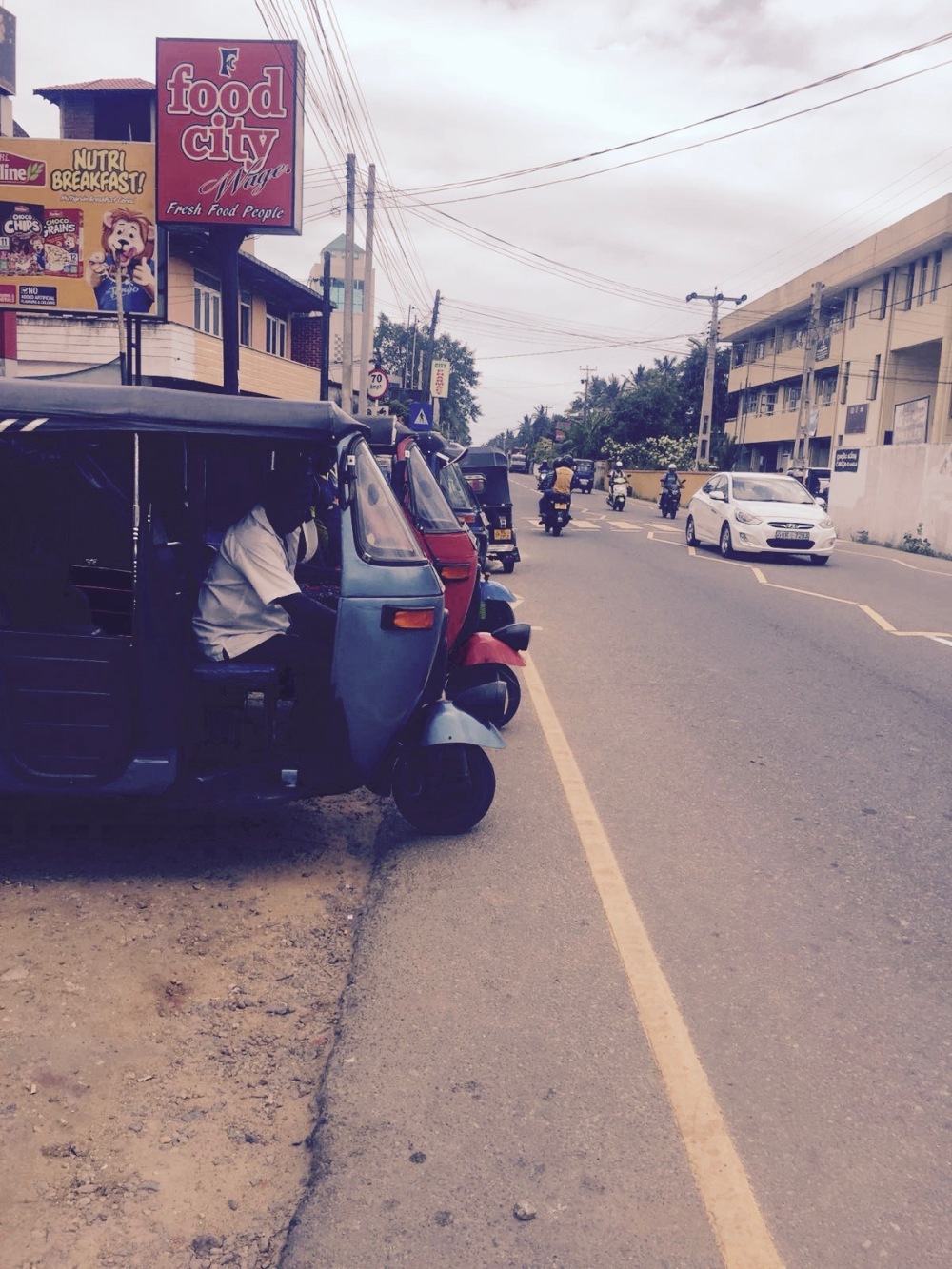During my month in Sri Lanka for TDM fieldwork, we lived in Central Galle, far from the beach and The Fort center. Due to that my group took a tuk tuk every day, twice a day. We came to make good friends with our neighbors, who were also our tuk tuk drivers. This routine made me love and respect these drivers who will drop everything to drive 20 or 30 minutes and make a couple of extra dollars as well as those evening tuk tuk drivers, whether its 8pm after dinner or 1am, there’s always a tuk tuk driver around. Below is my take on the resilience of tuk tuks, as part of our overall research on micro and small enterprises (MSEs) within the Galle area of Sri Lanka.

The Resilience of Tuk Tuks
As a whole Sri Lanka has over 1.2 million tuk tuks and while their main purpose is transportation it is clear that there is variety among the drivers with some embracing modern technology and others maintaining the traditional usage, regardless all tuk tuks are not created equally (Sirimanna, 2017). Therefore, it is impossible to place these essential MSE’s into a single resilience category. The survival tuk tuks focus on the primary function of these vehicles: getting passengers from A to B while trying to charge as much as possible. This category has limited English, based on participation observation they usually know the essential directional language and find passengers based on location near the popular attractions. Survival tuk tuks are focused on the bottom line of earning the most expenditure per customer, whether they are tourists or Sri Lankans.
Through participation observation, it can be concluded that adaptive tuk tuks are more involved in the resident network. These tuk tuks can work through commision in bringing tourists to different specialty shops or tours such as a tea factory or gem shop, where they earn a percentage or a flat rate for bringing tourists to these places. Also, they tend to have a higher level of English fluency as they are able to explain or even convince tourists to visit these places, outside of the individuals planned trip. Adaptive tuk tuks are changing their product away from locals and understand that their extra expenditure can be made through using the resident network and connecting tourists with other shops, in a way that earns them extra money.

Lastly, innovative tuk tuks are those that are moving away from the domestic market and solely focusing on tourists. These tuk tuks use mobile phone apps like PickMe, which takes inspiration from popular western apps like Uber and Lyft, and allows the tuk tuks to go specifically to a customer and have a set route, as well as pay by card (PickMe, n.d.). Similarly, innovative tuk tuks also use eZ Cash, an app that allows for passengers to scan and pay (EZ Cash, n.d.). Innovative tuk tuks have also started making their own tours, offering a flat rate for the whole day and taking tourists to the “hot spots” of the area. These tuk tuk drivers have changed their target market to tourists and have moved slightly beyond the resident network as they use mobile apps to find customers.
The variety of strategies used by tuk tuks to be successful shows that it is not possible to put all tuk tuks into the same competitiveness category. However, those entrepreneurial tuk tuks who use these apps, that can take advantage of the resident network and the common desires of tourists to see specific attractions are currently the most successful, as they are earning the most expenditure from tourists through adapting to the tourist needs. Therefore, the individual tuk tuks traditional consistency or high entrepreneurial goals gives all tuk tuks resilience potential in the future of tourism.

References
EZ Cash. (n.d.). EZ Cash App. Retrieved March 24, 2018, from http://www.ezcash.lk/ezcash-app.php
PickMe. (n.d.). About Pickme | Digital Mobility Solutions Lanka (PVT) Ltd. Retrieved March 24, 2018, from https://pickme.lk/about-pickme/
Sirimanna, B. (2017, November 12). Electric tuk tuks for Sri Lanka. Retrieved March 24, 2018, from http://www.sundaytimes.lk/171112/business-times/electric-tuk-tuks-for-sri-lanka-268036.html